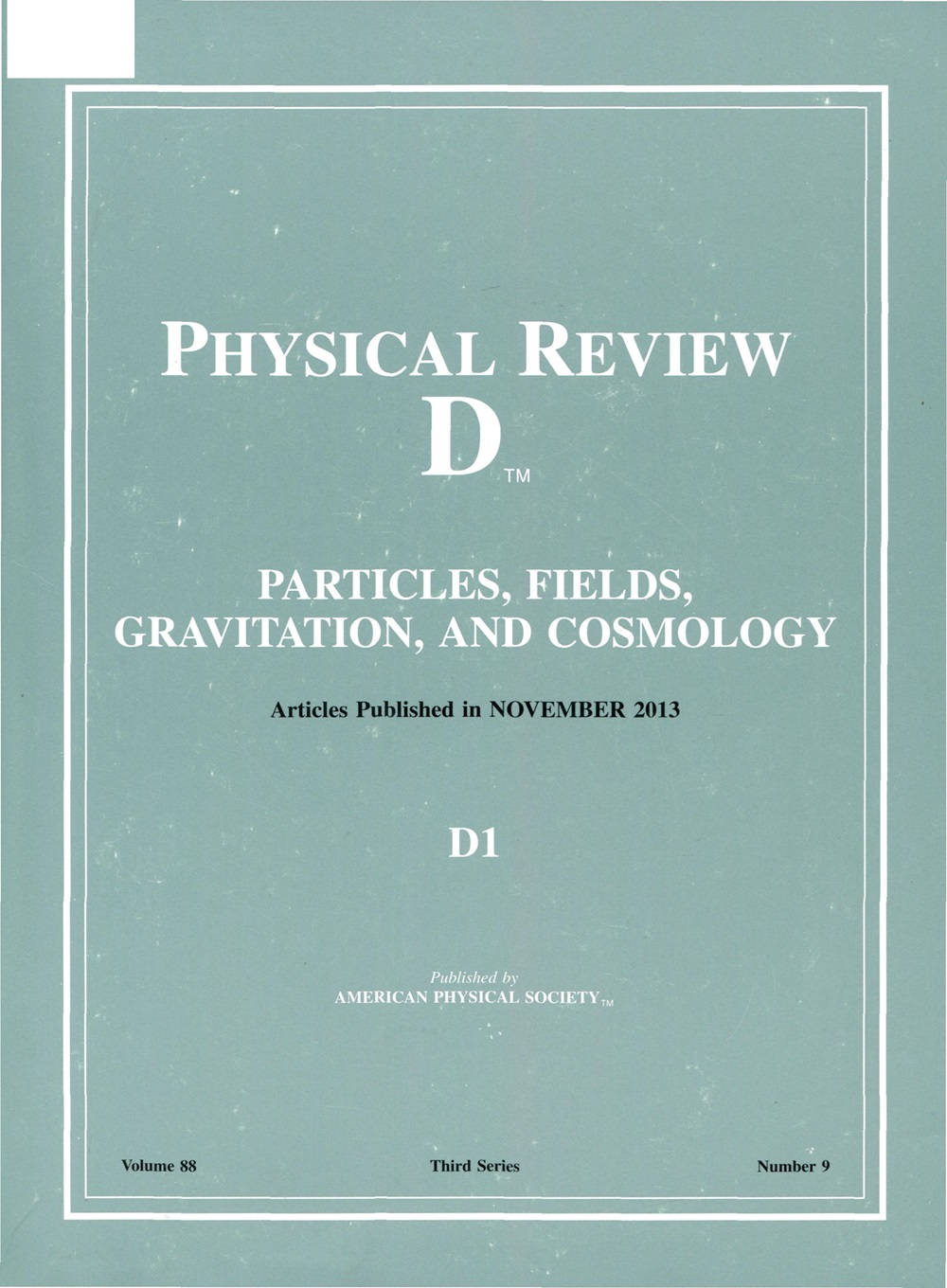有效一体模型中的实模和零内存贡献
IF 5
2区 物理与天体物理
Q1 Physics and Astronomy
引用次数: 0
摘要
我们引入了一种新的方法来描述有效单体模型中从启发到合并和衰荡的实值m=0模式,包括振荡和零内存贡献。振荡部分建模的一个关键方面是通过希尔伯特变换对实模态进行复化。通过应用用于复杂的m>;0模式(包括源驱动效应)的标准方法,该程序允许对合并衰荡波形进行准确描述。然后,仅考虑实部就可以恢复物理信号。我们将此方法应用于极端质量比体系,考虑了史瓦西和克尔时空中粒子驱动的线性引力扰动。然后,我们将我们的描述扩展到自旋对齐,准圆形,质量相当的双星,提供包含测试质量限制的分层拟合。合并后的波形与吸气有效的一体波形相匹配。我们还通过Bondi-van der Burg-Metzner-Sachs平衡定律将位移记忆纳入(2,0)模式,从而提供了一个完整的包含振荡和零记忆效应的有效一体模型。通过混合数值相对论替代模型验证了该模型的准确性,发现对于等质量非自旋情况下的四极子,在50M⊙处,对于(2,0)模式贡献最大的倾角,LIGO噪声加权不匹配F¯=6×10−4。2025年由美国物理学会出版本文章由计算机程序翻译,如有差异,请以英文原文为准。
Real modes and null memory contributions in effective-one-body models
We introduce a novel approach to describe real-valued m=0 modes from inspiral to merger and ringdown in effective-one-body models, including both oscillatory and null memory contributions. A crucial aspect of the modelization of the oscillatory part is the complexification of the real modes via a Hilbert transform. This procedure allows for an accurate description of the merger-ringdown waveform by applying standard approaches employed for the complex m > 0 F ¯ = 6 × 10 − 4 50 M ⊙ Published by the American Physical Society 2025
求助全文
通过发布文献求助,成功后即可免费获取论文全文。
去求助
来源期刊

Physical Review D
物理-天文与天体物理
CiteScore
9.20
自引率
36.00%
发文量
0
审稿时长
2 months
期刊介绍:
Physical Review D (PRD) is a leading journal in elementary particle physics, field theory, gravitation, and cosmology and is one of the top-cited journals in high-energy physics.
PRD covers experimental and theoretical results in all aspects of particle physics, field theory, gravitation and cosmology, including:
Particle physics experiments,
Electroweak interactions,
Strong interactions,
Lattice field theories, lattice QCD,
Beyond the standard model physics,
Phenomenological aspects of field theory, general methods,
Gravity, cosmology, cosmic rays,
Astrophysics and astroparticle physics,
General relativity,
Formal aspects of field theory, field theory in curved space,
String theory, quantum gravity, gauge/gravity duality.
 求助内容:
求助内容: 应助结果提醒方式:
应助结果提醒方式:


